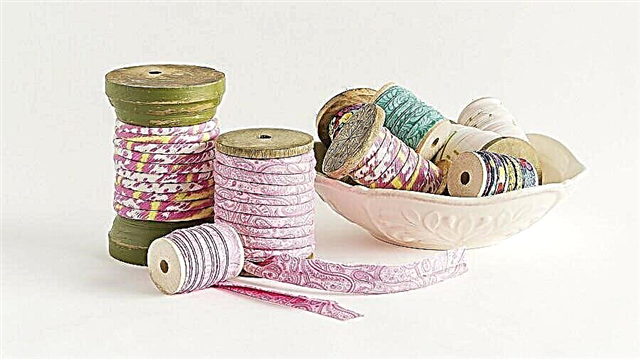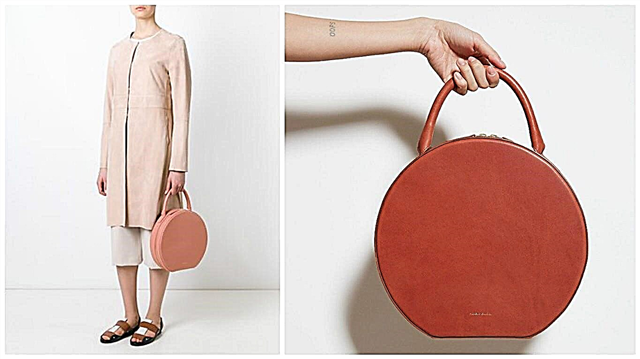It is not at all difficult to make a classic secret fastener, which delicately hides simple buttons or buttons from prying eyes.
But the mysterious hook-and-loop fastener in a product with a sharpening and a curly neck will require you a little more zeal.
It is more convenient to carry on the fastener fastener on the shelves (back parts) until the tucks are healed and the side and shoulder seams are sewn.
Before proceeding with the fastener fastener, it is necessary to prepare the parts that will be fastened and the details of the trim.
Top patterns of models with a secret fastener
You will need:
- adhesive doublerin;
- disappearing marker for fabric or chalk;
- buttons or buttons;
- special foot for buttonhole;
- threads, tailor pins, scissors, ruler.
Step 1

Before you cut out the details of the shelves (backs), you need to mark them in the fastener area.
On the right half: deviate from the midline 1.5 cm, then 3.0 cm, then two times 2.7 cm and 1 cm for the allowance.
On the left half: 1.5 cm from the midline, then 3.0 cm and 1 cm for stock.
Step 2

Duplicate the details of the strips and trim with adhesive doubler.
Step 3

Let's start with the right half.
Sweep lines 2 and 4 from the edge so that they are visible from the front.
Step 4

On the flown lines (2 and 4), iron the planks on the wrong side.
Step 5

On a secret bar (one that is 2.7 cm wide), mark out the places for loops or buttons.
Note: if the neck is deep and pointed, like mine, it is necessary to make sure that the upper loop is located at a distance of about 4 cm from the top, if measured in the center of the bar, or at a distance of 3 cm, if measured along the side line.
If you are planning a button closure, then at this stage you need to sew the buttonhole on the sewing machine using the special foot and cut through it. I will have buttons, so I just marked their future locations.
It’s also now convenient to mark out the places for sewing buttons on the left half.
Unscrew the slats on the wrong side.
Step 6

Unscrew the countersunk plate to the upper one, while its bending does not reach the bend of the outer strip by 3 mm (this is what we laid down in the drawing: the width of the upper strip is 3 cm, and the secret one is 2.7). So the hidden bar will not be visible from under the top.
Step 7

Expand the planks again so that the inner side of the outer plank is on top (see photo). On it you need to mark the places of the fasteners (in the photo they are dotted). Fasteners should be located strictly between the loops punched on a secret level.
Edging codpiece processing
Step 8

From the upper bar, make lateral fasteners, capturing three layers and not going to the outside of the upper bar and to allowance.
Step 9

Let's move on to bottom processing.
Now it consists of two folds: the upper and countersunk slats.
Step 10

Turn each of the folds inside out and stitch at a distance of 2 cm from the bottom without going to the adjacent fold.
Step 11

To carve out excess allowances, to turn out corners and to iron.
Step 12

Tuck the bottom hem allowance twice and grind at a distance of 1–2 mm from the bend (it is necessary to lay in the hem allowance of 2 cm in the pattern).
The secret of the countersunk strap is wrapped around it and seized.
Step 13

Let's move on to the left half. Her plank is treated like an ordinary one-piece plank.
To iron an allowance on a level, to iron a level on a wrong side.
Step 14

Treat the bottom corner of the plank: unscrew the plank on the front side, lay a line across it at a distance of 2 cm from the bottom, and cut out excess allowances.
Sewing School: Zipper
Step 15

Turn the corner out. Tuck the bottom hem allowance twice and grind at a distance of 1–2 mm from the bend (it is necessary to lay in the hem allowance of 2 cm in the pattern).
The clasp is almost ready.
Next, you need to prepare the details of the stitching: to overcast or to process with an oblique inlay.
Note: for further work, it is necessary to perform shoulder seams on the details of the bodice and facing.
Step 16

Unscrew both strips of the right shelf, outer and countersunk, on the front side, cover them with a grinder, applying it with the front side to the front side of the shelf. Chop off.
Step 17

Lay the stitch 1 cm from the edge and cut out excess allowances.
Step 18

Unscrew the grind up and sew it for an allowance at a distance of 1-2 mm from the seam, the stitch length is 3-4 mm.
Step 19

Unscrew the seam on the wrong side and unscrew the upper corner of the bar. Iron.
Step 20

The upper cut and the corner of the left shelf are similarly processed.
Step 21


It remains only to stitch the planks at a distance of 1-2 mm from the folds from the wrong side.
Modeling a lowered bodice based on a Burda pattern
Step 22

Now you can sew buttons according to the layout or set buttons.



The clasp is ready!



So the push-button closure looks in the finished product.
Good sewing!
The author of the master class and photo: Daria Tabatchikova

By education, Daria is a PR specialist and economist, but several years ago she devoted herself entirely to her favorite business - sewing.
She learned to sew from magazines, books and using the Internet, there are also sewing courses in the arsenal, but Daria considers herself to be self-taught. She loves to study specialized sewing literature from different years and countries, and then put her knowledge into practice.
At the end of 2017, Daria became the winner of the festive contest from BurdaStyle.ru.
She leads her Instagram page, where a marathon for sewing New Year’s dresses, and the VKontakte group are taking place.



